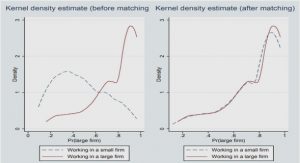Get Complete Project Material File(s) Now! »
CHAPTER THREE: METHODOLOGY
Note: Some of the methodology in this chapter has been published in BMC Systematic Reviews Journal (see Appendix 19).
Introduction
This chapter explains in detail the design of the methodological (two systematic reviews and a cross-sectional survey) approach, laying out in detail the protocols for the systematic reviews, and how sample size, sampling procedure, data collection process and data analysis for the cross-sectional survey, was conducted. The chapter is laid out as follows:
Section 3.2 explains the protocol of the systematic review on prevention of cervical cancer among HIV-seropositive women, Section 3.3 explains the protocol of the systematic review on treatment of cervical cancer among HIV-seropositive women and Section 3.4 details the methodology of the national cross-sectional survey on knowledge, attitude and practices of young people on cervical cancer, screening, HPV and vaccination.
Protocol for the systematic review on prevention of cervical cancer in HIV-seropositive women through screening from developing countries
The development and reporting of this protocol was guided by the Preferred Reporting Items for Systematic Reviews and Meta-Analyses (PRISMA) Protocols (PRISMA-P) statement (see Appendix 1) and the systematic review was carried out in accordance with the Preferred Reporting Items for Systematic Reviews and Meta-Analyses (PRISMA) guidelines76 and was registered with the PROSPERO database (CRD42018095702)77
Studies’ eligibility criteria
Studies were included if Cervical cancer prevention methods for HIV-seropositive women (such as pap smear, visual inspection with acetic acid, HPV DNA testing and HPV vaccination among others) were key outcome HIV and cervical cancer prevention modalities were considered being independent and outcome variables respectively Description, effect or impact of the prevention modality on HIV-seropositive women was an outcome Published in peer-reviewed journals Done in or for countries or regions considered to be developing countries by United Nations78 They were randomised controlled trials and observational study designs – prospective cohorts, retrospective cohorts, case-control and cross-sectional Reported in English language Prospective cohort studies had a defined length of follow up. Length of follow up was used to assess for the quality of the outcomes.
Studies were not excluded based on length of follow up. However, follow up rates were used to give scores to the quality of the outcomes. Follow up rates of less than 60% were considered as having limited validity especially when the reasons for loss were related to both exposure and outcome status79
In cases of studies done across countries, that are developed and developing, the team extracted results for developing countries from these where possible and contacted study authors for more information. All studies were included and sample sizes were used to assess quality and inform interpretation of findings. The reviewers’ assumptions were that studies with smaller samples might not provide additional value in terms of high quality evidence80. Reviews, studies looking at cervical cancer in general and those with unrepresentative samples were excluded. Unrepresentative samples (looking at HIV positive women, controls and sampling criteria) were identified through performing non-parametric tests on geographical and demographical representation of the sample against that of the population.
Search strategy
Two independent reviewers (WM and TC) guided by a protocol searched PubMed (via the PubMed/MEDLINE interface using the “PICO” option), CINAHL (via the EBSCO interface using key words), Cochrane (via The Cochrane Library using MeSH terms and qualifiers), Embase and MEDLINE (via the OvidSP interface) using key words and supplementary free-text terms (see Table 3.1) until January 2018. Truncation commands (root word) and proximity operators (words which will be within a chosen distance of each other) and Boolean logic operators (OR and AND) were used as well (see Table 3.2). Search terms as follows: (cervical cancer or cervical neoplasms or cervical carcinomas) AND (prevention or screening or Pap smear or VIA) AND (developing countries or underdeveloped countries or low-income countries) were used specifically for each database (see Appendix 2). To improve the efficiency of the final search, preliminary trials with search terms were conducted. Citation and reference tracking was conducted to search additional papers to add to the electronic database search.
Study selection
The initial search of the databases yielded 2557 results and an additional two studies were identified through citation and reference tracking to make a combined 2559 articles. Two independent reviewers (WM and SF) conducted the screening process to identify eligible studies and reasons for excluded studies were documented. Disagreements and other issues related to the screening process were resolved as reported in the protocol. Removal of duplicates and screening of title and abstracts excluded 2212 articles. An additional 198 articles were further excluded because of not being relevant to the topic. The remaining 149 articles were reviewed in full text (see Appendix 3) and 124 studies were excluded for not meeting the eligibility criteria. Twenty-five articles met the eligibility criteria and were included for final analysis.
Data extraction
The primary reviewer (WM) and TC double extracted the data. The data extraction form (see Appendix 4) was piloted on a few selected studies and adjusted accordingly for its appropriateness. The following content from the included 25 studies was extracted: title of the study, author, publication year, study design, study setting (country/region), sample size, exposures and outcomes and all results including statistics. Three additional team members, SF, BGB and ES, assessed the extracted data to ensure accuracy and inconsistencies were discussed and resolved through consensus. Frequency tables were used to summarise the results.
Quality assessment
The quality of the included studies was assessed using a combination of a modified version of the Newcastle-Ottawa Quality Assessment Scale81 (see Appendix 5) and the NIH Study Quality Assessment Tools for observational cohort cross-sectional case-control and before-after studies82. The following: focus of research, key findings, study design, length of follow-up and representativeness of participants, were used to ascertain quality. For an easy quality assessment process, studies were categorised into three groups, namely randomised controlled-trials, observational studies with control group(s) and observational studies without control group(s). Outcome measures were assessed based on whether the articles had a predefined outcome measure and if any cervical cancer prevention method was explored or its application was discussed. Two independent reviewers (WM and BGB) carried out the quality assessment process and discrepancies that arose were resolved through discussion with other team members. The average score of the two reviewers (WM and BGB) on both the quality assessment tools became the quality score for each study, with zero being very low quality and five being high quality.
For RCT studies, assessment was based on whether (1) randomization of participants was reported, (2) all participants who entered the study would have been accounted for in the analysis, (3) participants were analysed in the groups they were randomized to, (4) blinded outcome assessment was used, (5) power calculation information was provided, (6) baseline characteristics of study groups were balanced at the start of the study, and, in case were there was imbalance, adjustment for the imbalance was done in the analyses (see Table 3.3).
SUMMARY
PUBLICATIONS BASED ON THIS THESIS
LIST OF TABLES
LIST OF FIGURES
APPENDICES
LIST OF ABBREVIATIONS .
CHAPTER ONE: INTRODUCTION
1.1 Introduction
1.2 Contextual Background
1.3 Study justification .
1.4 Research questions .
1.5 Research aim
1.6 Chapter One Summary
1.7 Organisation of the thesis.
CHAPTER TWO: LITERATURE REVIEW
2.1 Introduction
2.2 Theoretical framework of cervical cancer research
2.3 What is cervical cancer?
2.4 Epidemiologic classification of HPV types associated with cervical cancer
2.5 Cervical cancer pathogenesis, types and stages
2.6 Cervical cancer screening and vaccination
2.7 Cervical cancer treatment
2.8 Cervical cancer and HIV in developing countries
2.9 Zimbabwe’s current situation
2.10 Cervical cancer prevention in Zimbabwe
2.11 Young people in Zimbabwe and cervical cancer
2.12 Cervical cancer in South Africa: can Zimbabwe learn something?
2.13 Chapter two summary
CHAPTER THREE: METHODOLOGY
3.1 Introduction
3.2 Protocol for the systematic review on prevention of cervical cancer in HIVseropositive
women through screening from developing countries
3.3 Protocol for the systematic review on treatment of cervical cancer in HIV seropositive
women from developing countries
3.4 Methodology of the cross-sectional survey
3.5 Chapter three summary
CHAPTER FOUR: RESULTS
4.1 Introduction
4.2 Cervical cancer screening strategies currently used for HIV-seropositive women in developing countries: results of a systematic review
4.3 Cervical cancer treatment strategies currently used for HIV-seropositive women in developing countries: results of a systematic review
4.4 Results of the cross-sectional survey on knowledge, attitudes and practices of young people towards cervical cancer, risk factors, screening and HPV vaccination
CHAPTER FIVE: DISCUSSION
5.1 Introduction
5.2 Cervical cancer screening among HIV-seropositive women
5.3 Cervical cancer treatment among HIV-seropositive women
5.4 Young people and cervical cancer in an era of HIV
5.5 Study limitations
CHAPTER SIX: IMPLICATIONS OF THE STUDY, CONCLUSIONS ANDnRECOMMENDATIONS
6.1 Summary
6.2 Cervical cancer management for a developing country with high HIV burden
6.3 Advocating for an inclusive cervical cancer policy in Zimbabwe
6.4 Analytic frameworks that might help decision-making in cervical cancer prevention in developing countries
6.5 Implications of this study to evidence-based health care
6.5 Recommendations
References
APPENDICES
GET THE COMPLETE PROJECT






